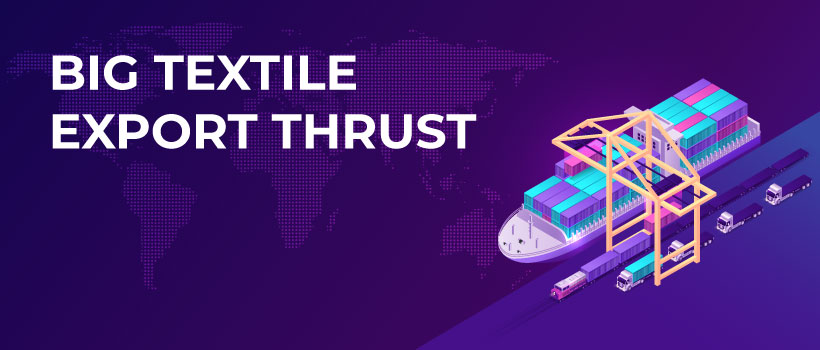India textile exports to cross $100 billion by FY26

Last Updated: 13th December 2022 - 03:59 am
If there is one sector that has been the focus of the government in the last few years, it is the textiles sector. Textiles is not only labour intensive and job creating, but it also has huge MSME implications in terms of business and export spread. For the current year FY22, the government is targeting textiles exports of $40 billion. However, the government has expressed confidence that textile exports would scale $100 billion by the year 2026.
One of the big stories that India would be betting on would be apparel exports. The Ministry of Textiles expects that out of the target of $100 billion of textile exports, apparel exports alone would be sizable. In fact, apparel exports are expected to touch $20 billion in FY23. Once a leader in textile exports, India gradually lost out in the cost cutting game to neighbouring countries like Bangladesh, Thailand and Vietnam, which have surged ahead.
One of the recent announcements that could make a big difference to the textile industry is the production linked incentive or the PLI scheme. The Textile ministry has underlined that for the apparel sub-segment to really achieve its true potential in India, there was a need for vertical integration of the industry. Unless these companies achieved global scale and size, they would not be able to fully benefit from the Production Linked Incentive (PLI) scheme.
One of the reasons, the government is very interested in the apparel and garments industry is that on the one hand, it is not investment heavy, and at the same time it is job creating. The government has also underlined the need for more of backward integration into the integrated value-chain like spinning and weaving. Plans are afoot to create world class infrastructure for the textiles industry to give a big push to the sector as a whole.
One thing that the Indian government is betting on is the recent shift by the global textile houses to a China Plus 1 policy so as to diversify the risk of overdependence on China. Most companies faced problems due to the supply chain constraints that were created when China imposed stringent lockdowns and restrictions in early 2020 to curb the spread of COVID-19. That was when most of the procurers looked at a more ration back-up policy.
That shift in procurement principle has opened a huge opportunity for India. India is the one country, other than China, that can promise scale in supply of roughly the same order. That makes India the obvious choice subject to the availability of improved infrastructure and a very supportive ecosystem. If the basic bells and whistles are put I place, there is a huge scope for India to boost exports of textiles and $100 billion should not be too tough.
If India wants to achieve such aggressive targets in textile exports, then the Apparel Exports Promotion Council (AEPC) has to play a pivotal role. AEPC is the official body of apparel exporters in India and it has been established under the aegis of the Ministry of Textiles. This Council coordinates and ensures that adequate assistance is provided to Indian exporters as well as to importers or international buyers.
- Flat ₹20 Brokerage
- Next-gen Trading
- Advance Charting
- Actionable Ideas
Trending on 5paisa
Indian Stock Market Related Articles
Disclaimer: Investment in securities market are subject to market risks, read all the related documents carefully before investing. For detailed disclaimer please Click here.
 5paisa Research Team
5paisa Research Team
 Sachin Gupta
Sachin Gupta




